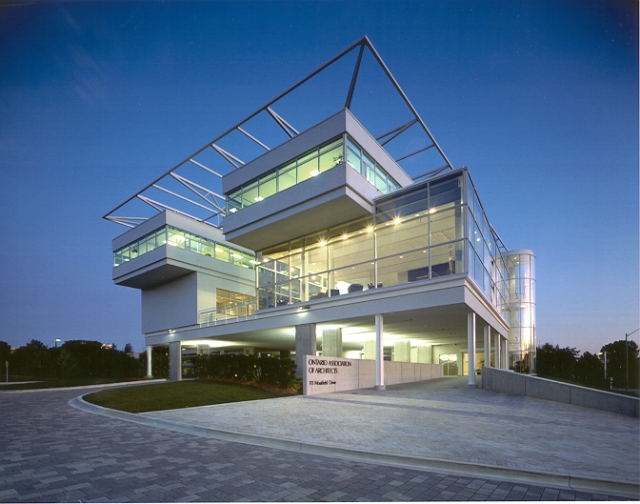Editorial: Architecture’s Climate Crisis
Last fall’s special report by the Intergovernmental Panel on Climate Change (IPCC) was grim news. Examining over 6,000 studies, the IPCC confirms that even if all carbon emissions were to stop immediately, human activities will have already caused 1.0°C of global warming above pre-industrial levels. We will almost certainly reach 1.5°C of warming—as soon as 2030.

Permanently heating the planet to this amount will have substantial consequences, with climate-related risks to health, livelihoods, food security, water supply, human security and economic growth. And in order to limit warming to 1.5 degrees—rather than the far more dire 2.0-degree scenario—we will need to reduce global net carbon emissions by 45% from 2010 levels by 2030, and reach net zero by 2050.
In terms of architecture, limiting global warming to 1.5°C means that building emissions overall will need to be reduced vastly by 80-90% by 2050. More immediately, according to the IPCC, new construction will need to be fossil-free and near-zero energy by 2020 (that’s not a typo). In OECD countries—including Canada—deep energy retrofits of existing buildings will need to take place at a rate of 5% of building stock per year.
Last March when the IPCC was in Edmonton, the Mayor made the “Edmonton Declaration” to commit signatory cities to limit warming to 1.5°C. A report that the city commissioned identified similarly ambitious targets: all new residential and commercial buildings will need to be net zero energy by 2025, and 100% of pre-2017 buildings will need to be retrofitted to be 50% more energy efficient by 2050. In addition, solar photovoltaic panels and solar hot water will need to be installed on 80% of new and existing buildings by 2050.
These are daunting goals, but ones that must inspire us to action and leadership, rather than ignorance and paralysis.
As a first goal, architects can take the responsibility to educate themselves. Firms should be looking beyond LEED to understand deeper approaches to sustainability. Passive House standards, for instance, were developed for residential design, but their principles of achieving a high level of airtightness and eliminating thermal bridges are equally applicable to commercial structures. The even more comprehensive Living Building Challenge requires buildings to produce more energy than they consume, and collect and treat all water on site.
This education may pay off quickly. Passive House is one means of complying with the City of Vancouver’s recent sustainability standards. Vancouver’s plan aims to achieve zero emissions in all new buildings by 2030, including interim targets of a 70% reduction in emissions from 2007 levels by 2020 and a 90% reduction by 2025. Projects up for rezoning are required to be near-zero emissions.
Architects can also make a difference by pursuing projects which contribute to urban density and which embrace adaptive reuse. The Ontario Association of Architects is leading by example in retrofitting its 20-year-old headquarters to be net zero energy. This is in-line with the association’s commitment to the 2030 Challenge, which aims to take the building sector to zero carbon emissions by 2030.
In existing projects, architects can specify lower-impact materials and seek sustainable, low-carbon-footprint sources for materials. Pushing manufacturers to produce sustainable materials is also key, and architects can make a difference by asking sales representatives specific questions about their sustainability claims. Will they provide Environmental Product Declarations, seek Cradle to Cradle certification, or offer transparency through the Declare Product Database?
On a company level, firms can support research projects focused on understanding new technologies in construction materials and processes. Programs such as MITACS can help with matchmaking for firms interested in hosting graduate-level students. Firms can also encourage the environmental interests of existing employees, making time for them to pursue research, develop firm-wide tools and resources, and gain actionable expertise.
Being involved in advocating and consulting on sustainability-focused policy changes is also key. If these policies are not yet in place, architects can take the initiative to bring sustainability to the table—even in projects where it may not be a client focus. Increasingly, insurers are talking about designing for predicted future climate conditions, and architects do their clients a service by putting them ahead of the curve. How can each new building improve the environment, rather than worsen the crisis?
Architects often bemoan the profession’s fading relevance. With the latest warnings on climate change, we have the potential—and responsibility—to make a major impact.
